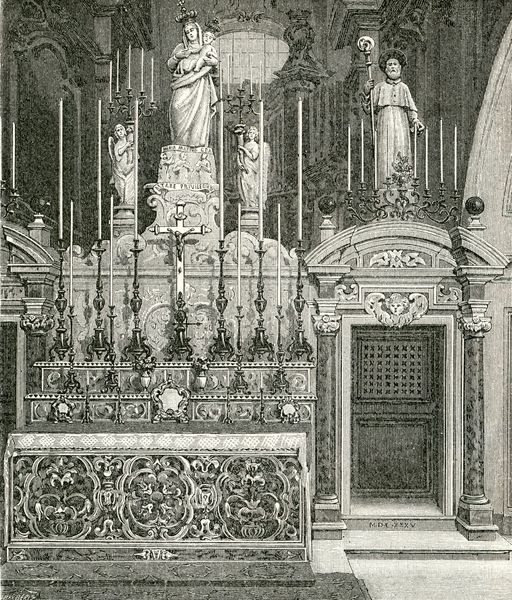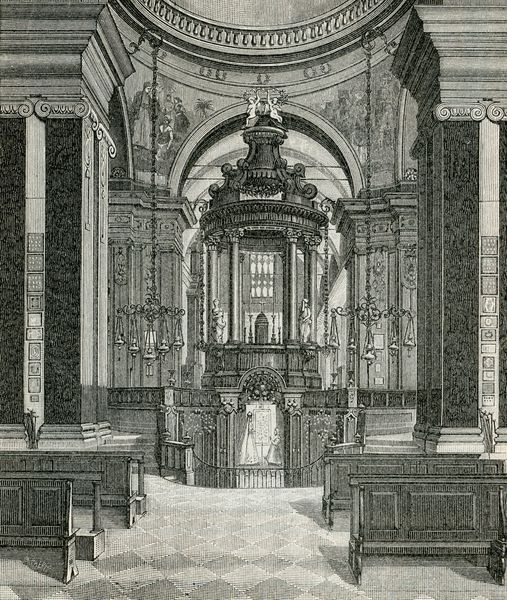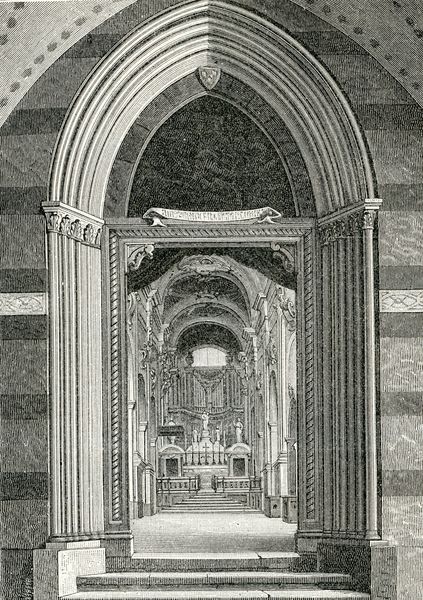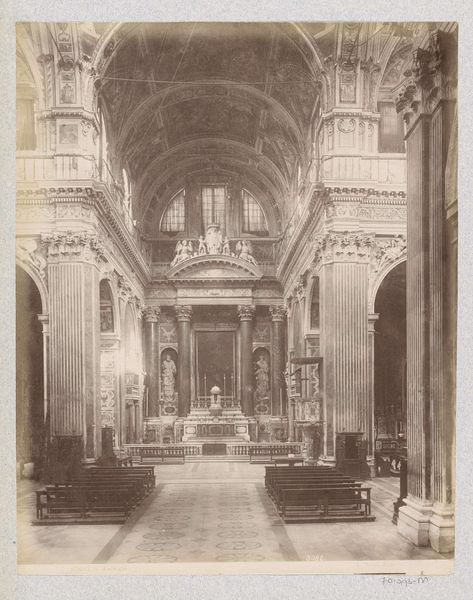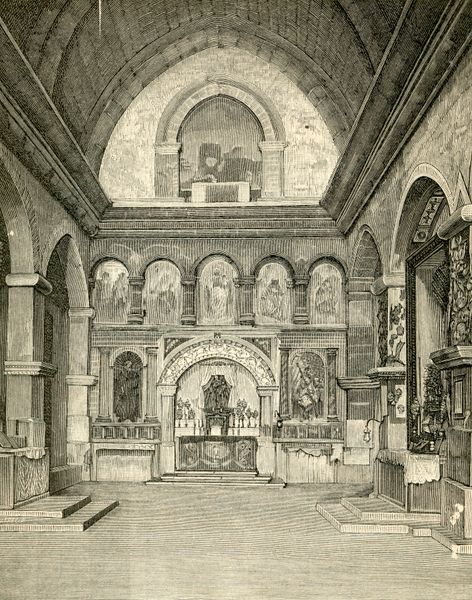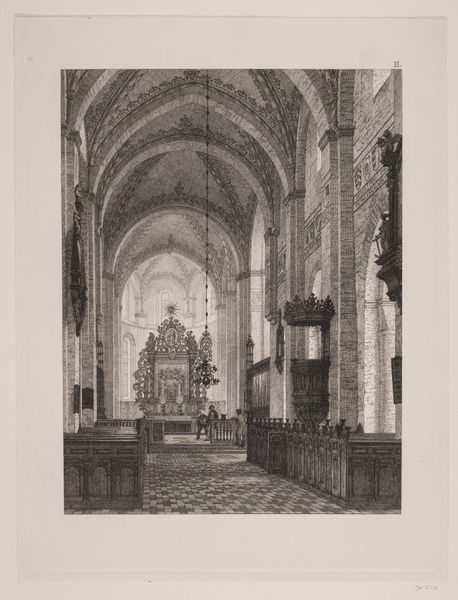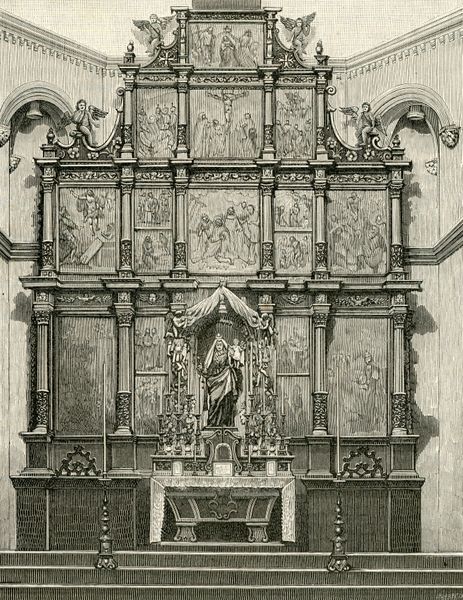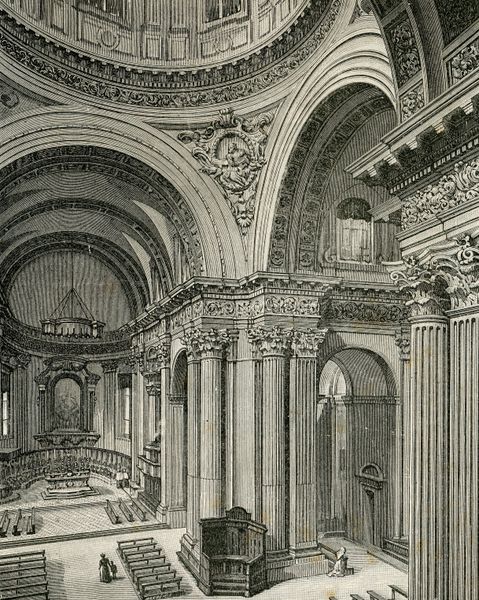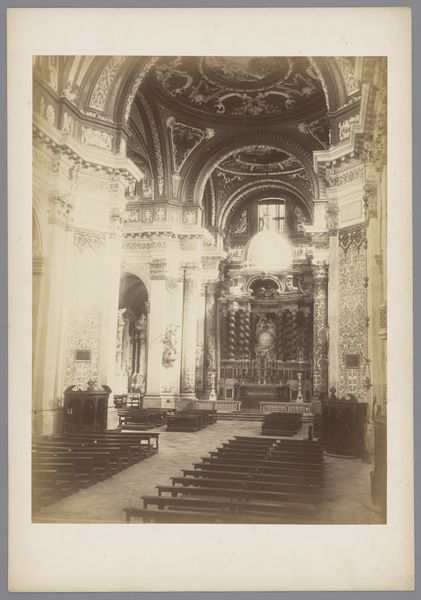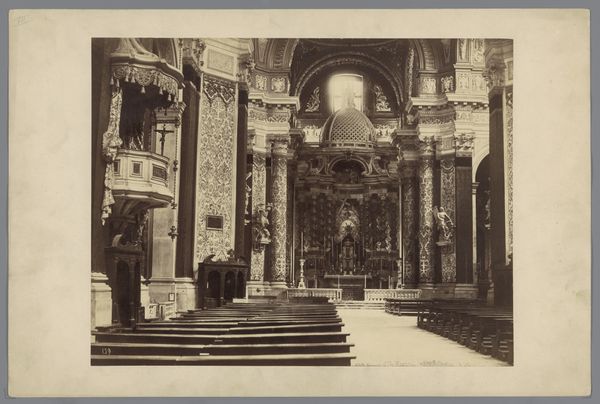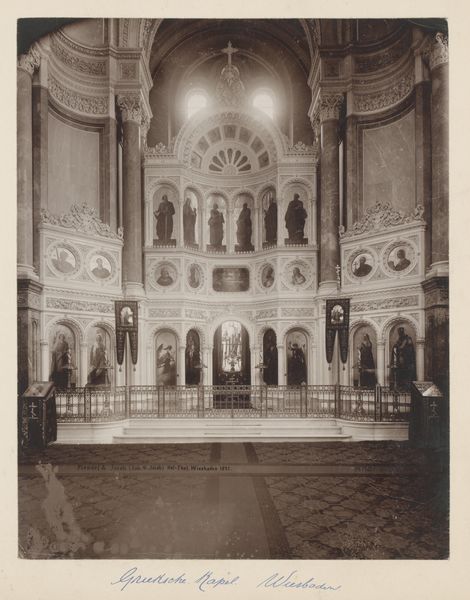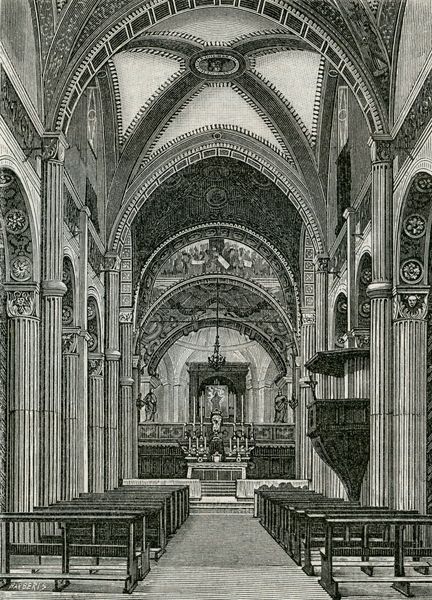
drawing, paper, ink, engraving, architecture
#
architectural sketch
#
drawing
#
paper
#
ink
#
geometric
#
architectural drawing
#
engraving
#
architecture
Copyright: Public domain
Curator: This drawing from 1898, by Giuseppe Barberis, titled "Interno Della Cattedrale," captures the interior of a cathedral with meticulous detail in ink on paper. What are your initial thoughts? Editor: Immediately, I'm struck by the imposing solemnity and oppressive grandeur of the space. The sheer architectural ambition on display evokes questions around power, patronage, and the complex relationship between religious institutions and the communities they claim to serve. Curator: Yes, Barberis's drawing is remarkable for its precise representation of architectural elements—columns, arches, and decorative details are all rendered with exacting linework. I think he captures not just the space, but a sense of timelessness within these holy spaces. The cross prominently displayed is symbolic of so many themes, sacrifice, suffering, hope, salvation... it is not simply a decoration. Editor: Indeed. And thinking about who this space would have historically served, one can't ignore the enforced hierarchies and gendered exclusions inherent in such grand religious structures. The overwhelming verticality can symbolize spiritual aspiration, but also stark social divisions, right? Who really gets to occupy such a sacred and privileged space? Curator: That's a vital perspective. What about the repeated geometric patterns? In many spiritual traditions, geometric shapes symbolize harmony and order. Do you feel that is an effective connection in this drawing? Editor: While Barberis shows geometric forms, it might actually reflect the constraints placed upon artistic expression within such institutions, how artists conformed to dominant ideologies. It reflects an imposition of order, a codified worldview, doesn't it? Curator: Fascinating. By capturing such spaces in drawings, we see these cathedrals evolve through documentation. Editor: Looking at Barberis's work now has revealed an interesting view into both aesthetic ambition and the politics of the built environment, I'd say.
Comments
No comments
Be the first to comment and join the conversation on the ultimate creative platform.
